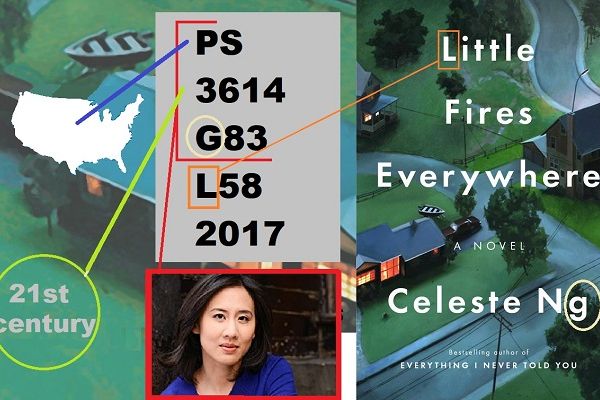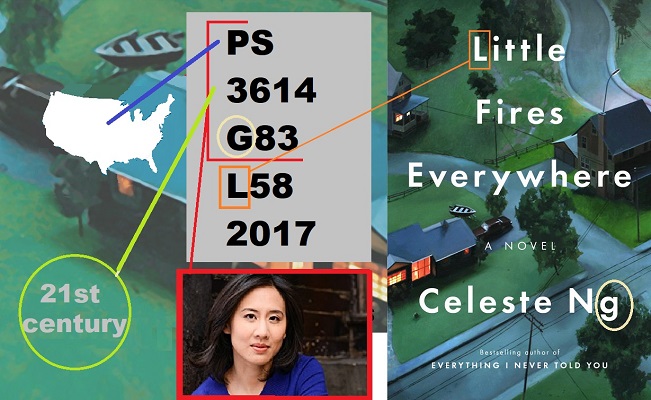University Libraries

Getting the Spine Straight: Cataloger Takes the Mystery out of Call Numbers
By Joan Milligan
Say you are standing in the leisure reading section looking at Paulo Coelho’s The Alchemist, whose call number begins with PQ. If you decide you want to find that novel about Shaker Heights you heard is on The New York Times best-sellers list, you can step to the right to for American novelists, call number PS.
We follow the Library of Congress classification system, which uses the alphabet to arrange books on the shelves. The outline fills several volumes, but it isn’t as complicated as it might sound. For example:
- B is philosophy and religion.
- D is world history.
- F is the history of specific places in the Americas.
Activity
Using the information above, match up the following titles with their call numbers.
Titles
- Works of Mercy by Pope Francis
- Book about the Dayton flood
- Book about postcolonial cultures
Call numbers
- DA10.5
- BV4647.M4
- F499.D2
(Answers: 1. B; 2. C; 3. A)
More letters, more details
Two-letter combinations indicate subsections of the single letter. For instance:
H: Social Sciences —- HN: Social History and Conditions
- HQ: The Family. Marriage. Women
In fiction, the Library of Congress classification number groups authors first by language (but keeping British and American separate), then by time period. Early 20th-century American novelists begin at PS3500; late 20th-century novelists begin at PS3550.
Activity
Match authors to call numbers. Hint: in recent years, the letter following the period is the second letter of the author’s last name.
Authors
- Kate Chopin
- Maya Angelou
- Edith Wharton
- Louise Erdrich
Call numbers
- PS3545.H16
- PS3555.R42
- PS3551.N464
- PS1924
(Answers: 1. D; 2. C; 3. A; 4. B; note: Kate Chopin was a 19th-century author.)
Cutters and translations
Call numbers can get more specific. The subject number is usually followed by a letter-number group for the author. These are called Cutters, after Charles Cutter, the person who came up with the system. This way all the books by an author on any given subject should be together on the shelf.
In fiction, the author’s number is first followed by a Cutter for the title.
Activity 1
Can you match up these Angelou novels with their call numbers?
Call numbers
- PS3551.N464 A8
- PS3551.N464 I17
- PS3551.N464 E94
Titles
- I Shall Not be Moved
- Even the Stars look Lonesome
- And Still I Rise
(Answers: 1. C; 2. A; 3. B)
Activity 2
What do you suppose the difference is between these two copies of Isabelle Allende’s novel La casa de los espíritus (House of Spirits)?
- PQ8098.1.L54 C3
- PQ8098.1.L54 C313
(Answer: The second call number is for the English translation. The number 13 is added to C3 for English. If it were translated into French, it would be C314; Vietnamese, C319.)
Yes, this is getting obscure, but we really do put these into use. Take a look at how many translations of St. Alfonso Maria de Liguouri’s Glorie di Maria we have in the University Libraries.
Give it a try
Think you have LCC figured out? Here is your big test. Try matching these books with call numbers.
Books
- Little Fires Everywhere by Celeste Ng
- Nonfiction about middle class families
- A history of Shaker Heights, Ohio
- Everything I Never Told You by Celeste Ng
- Everything I Never Told You in Chinese
Call numbers
- F499.S4
- HQ555
- PS3614.G83 E94
- PS3614.G83 E94167
- PS3614.G83 L58
(Answers: 1. E; 2. B; 3. A; 4. C; 5. D)
Further reading
Check out Ohio author Celeste Ng’s novels about middle-class American families, Everything I Never Told You and Little Fires Everywhere. Little Fires is set in the Cleveland suburb of Shaker Heights and has been on The New York Times best-sellers list since October 2017.
For more about Library of Congress classification, see A Guide to the Library of Congress classification by Lois Mai Chan. You can see the outline in print in our government documents section or online .
— Joan Milligan is special collections cataloger for the University Libraries.


